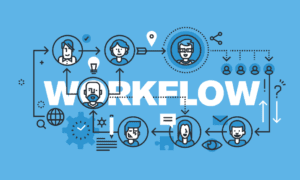The evolution of the internet has reached an inflection point, and Web3 is the driving force behind the shift. With blockchain, virtual reality, and decentralization at the forefront, web design is experiencing a revolution that’s transforming how we interact with digital spaces. But what does that mean for design, functionality, and, most importantly, the user experience? Let’s explore five emerging trends in web design that are defining this new era and why they matter.
Blockchain and VR Create Immersive Digital Experiences
Blockchain and virtual reality are setting the stage for immersive, secure, and personalized digital interactions. Blockchain’s decentralized nature allows for secure transactions and transparent data handling, while VR transports users into interactive, hyper-realistic environments. Together, these technologies are not just tools but architects of entirely new digital experiences.
For example, platforms powered by blockchain and VR are reshaping industries ranging from gaming to online shopping. Imagine visiting a virtual store where every product you see is authenticated on the blockchain, eliminating counterfeit goods and ensuring trust between buyers and sellers. These immersive environments have applications far beyond retail, including healthcare and education. For web designers, this marriage of technologies demands a focus on creating seamless transitions between VR spaces and blockchain integrations, all while maintaining an intuitive interface.
Hiring a Good Web Design Agency Makes a Difference
The implementation of new technologies that power websites requires the expertise of designers who understand both the old and the new. This is where agencies like Adchitects web design come into play. As specialists in crafting websites that integrate cutting-edge technologies with user-centric design, Adchitects demonstrates how to bridge the gap between innovation and practicality.
When building a web presence, businesses need more than just visually appealing websites—they need platforms designed to handle decentralized systems, blockchain integration, and advanced security protocols. Agencies that excel in this field understand how to design for scalability, ensuring that your platform grows alongside technological advancements.
Decentralization is Changing How Websites Are Built and Hosted
In the Web3 world, decentralization is not just a buzzword—it’s the foundation. Unlike traditional websites hosted on centralized servers, Web3 sites use decentralized networks that store data across multiple nodes. This approach enhances security and even reduces reliance on single points of failure, which are common in traditional hosting environments.
For web designers, decentralization changes how they approach architecture and data management. Sites built on decentralized protocols, such as IPFS (InterPlanetary File System), require innovative design strategies that prioritize lightweight interfaces and robust encryption. Decentralization also empowers users by giving them more control over their data, making privacy and transparency essential components of any Web3 design project. The challenge for designers lies in balancing these advanced features with accessibility, ensuring that users can navigate decentralized platforms as easily as they would a conventional website.
Smart Contracts are Shaping E-Commerce Websites
Smart contracts—self-executing agreements powered by blockchain technology—are transforming e-commerce websites. These distinct contracts remove the need for intermediaries, streamlining processes like payment verification, shipping logistics, and even returns. For designers, the integration of smart contracts means rethinking how users interact with online stores.
Web3 e-commerce platforms must communicate trust and security at every stage of the buyer’s journey. This involves designing interfaces that make blockchain processes invisible to users while ensuring transparency where it counts. Features like real-time transaction tracking, tamper-proof reviews, and token-based loyalty programs are becoming increasingly popular. By designing with these elements in mind, web designers can create shopping experiences that are faster, safer, and more rewarding for users.
Accessibility is More Important Than Ever in Web3 Design
While Web3 opens up exciting possibilities, it also introduces a layer of complexity that can alienate less tech-savvy users. Accessibility must be a cornerstone of Web3 design to ensure that these innovations are inclusive and user-friendly. This means designing interfaces that accommodate a wide range of abilities, devices, and internet speeds.
The shift to decentralized systems and blockchain-based platforms requires web designers to focus on education and simplicity. For example, incorporating clear onboarding processes, intuitive navigation, and straightforward explanations of Web3 concepts can help demystify this new era for users. As accessibility standards evolve, designers must go beyond compliance to create websites that truly empower all users, regardless of their technical expertise.





























